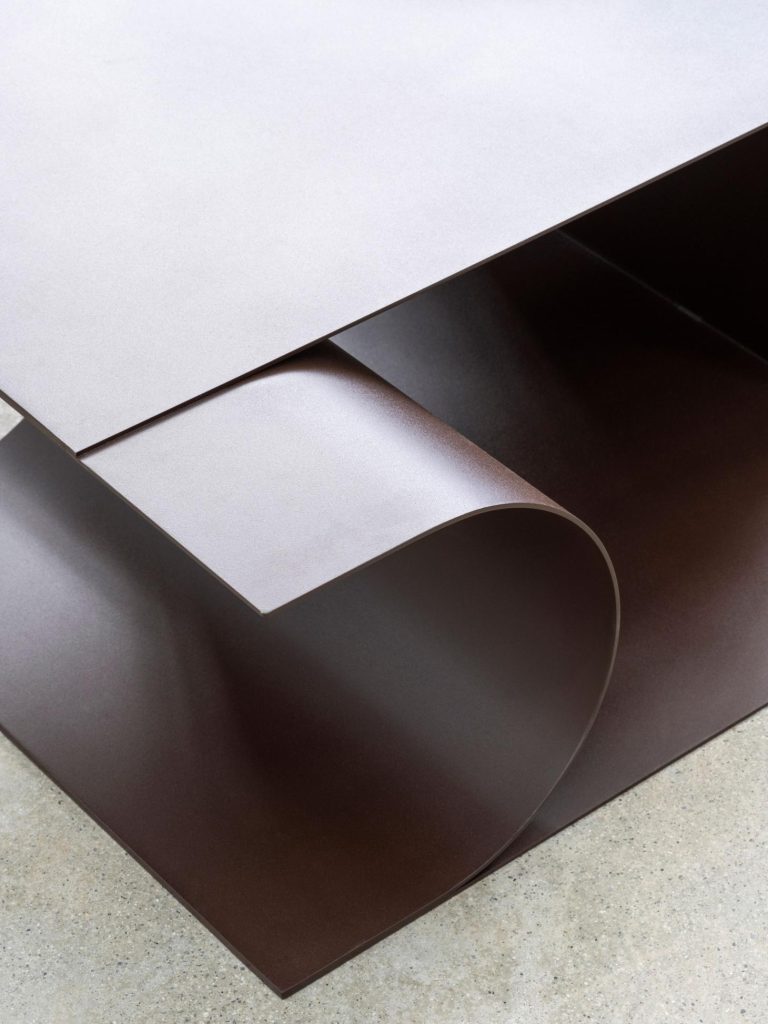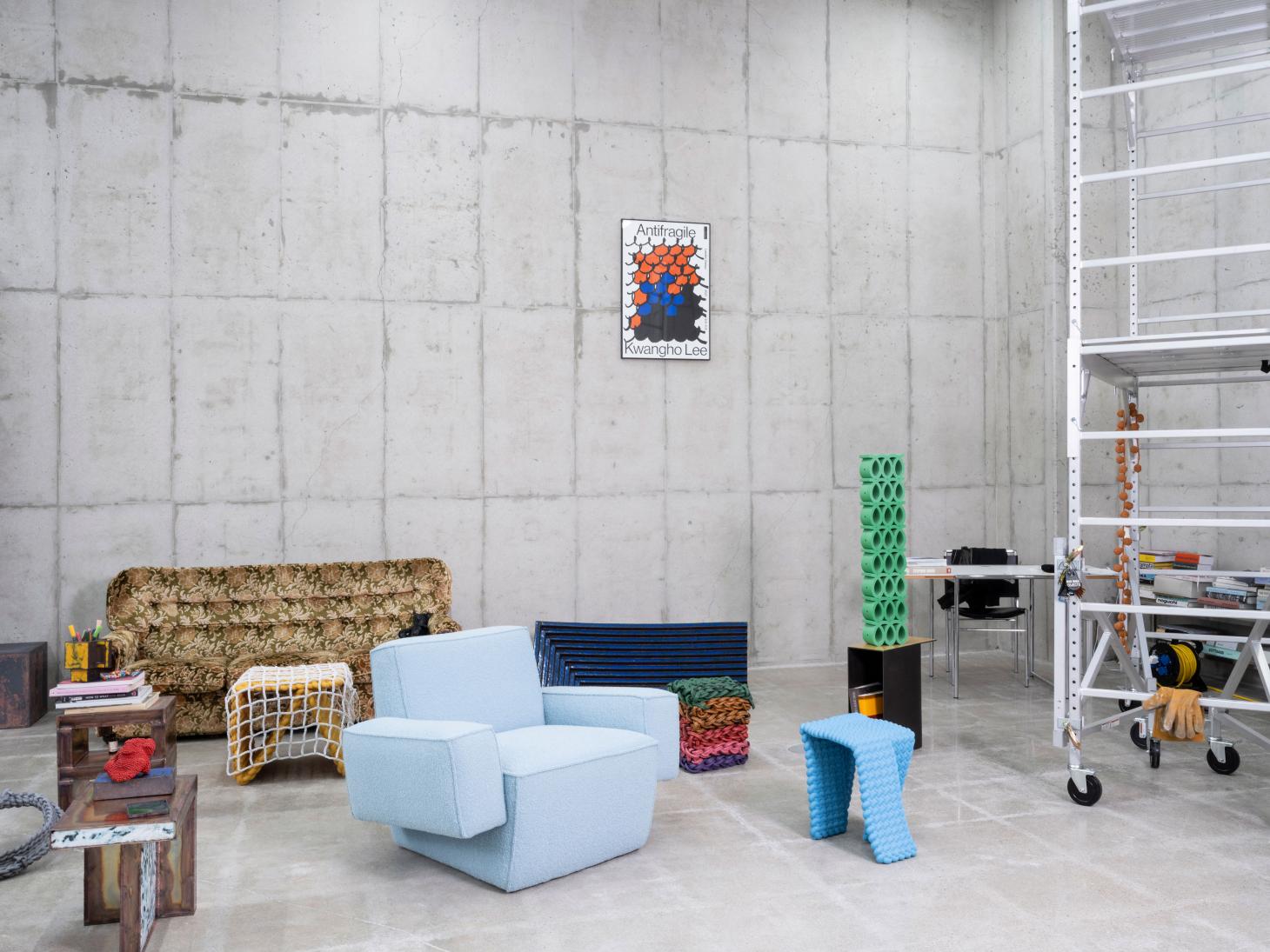Kwangho Lee turned into a furniture fashioner by some coincidence. Initially prepared in metal craftsmanship and plan at Seoul’s Hongik College, he made a couple of furniture pieces for his 2007 graduation show, which grabbed the eye of various plan displays, including Montreal’s Commissaires and New York’s Johnson Exchanging Exhibition. Throughout recent years, the Korean fashioner’s assemblage of work has extended to incorporate furnishings, establishments and insides, and he is currently sending off his most memorable assortment outside the collectible plan circuit, as a team with Swedish furniture brand Trim.
Kwangho Lee Representation
Kwangho Lee captured in his Hanam studio, on the edges of Seoul in July 2022 with his plated copper pieces for Salon 94
The aftereffect of manufacture explores different avenues regarding wood, stone, straw, etched styrofoam, tied nylon rope and plated copper, Lee’s vigorously cycle based work conveys an energy for materials and specialty that has profound roots in his life as a youngster.
‘My grandparents have been an incredible impact. They were ranchers thus normally that affected the manner in which I think and make with my hands,’ he makes sense of. Noticing his grandparents utilizing regular materials to make apparatuses and objects cultivated an interest in making things with his hands. Lee would shave wood to make slingshots and play with high quality water wheels by a stream. ‘The delight of making is fundamental to making sense of my work,’ he says.
His plans are a characteristic movement of his childhood. Working from two studio spaces (a more modest studio in Seoul’s Seongsudong area, as well as a bigger studio in neighboring Hanam), Lee bunches, cuts, prepares and welds materials to make refined furniture that bears hints of its assembling cycle.
Furnace at Kwangho Lee studio
The chilbo furnace, used to fire hued glass onto copper or metal
Among his most popular works are pieces highlighting plated copper surfaces, which he began making in 2013 utilizing a customary Korean strategy called chilbo that he reproduces in an enormous oven in his Hanam studio. It includes pounding shaded glass that is then terminated onto copper or metal sheets, with startling, frequently crude outcomes. The procedure is typically applied to adornments or little articles, however Lee applies it to bigger surfaces on generally welded copper furniture, or boards decorated in carefully made cherry wood, to make seats, cupboards, tables and lighting.
Tied nylon wire has been a repetitive material in the creator’s work all along. He previously experienced it in 2007 while chipping away at lighting plan – or all the more definitively, when he made larger than average hitched sytheses of dazzling blue and red wires, woven around enormous bulbs and to some extent hung from the roof. ‘At that point, I believed that the three most significant parts of creating lighting were power, electrical wire, and bulbs,’ he makes sense of. ‘To make a lighting component utilizing just those components, I began tying and sewing the actual wire. Following a few years of making lighting components utilizing wire, I acquired the certainty to wind around something together to make furniture, and PVC tubing was the material I came to pick.’
Blue tied seat by Kwangho Lee
Easy chair from the ‘Fixation’ series
Yet again exploring different avenues regarding the material prospects of winding around (he attempted it in nylon as well as cowhide), he made furniture with additional unbending and contained shapes than the method would generally permit. ‘To fabricate a structure for woven furniture utilizing just this cycle, and without a given casing, it needed to become straightforward, any other way it can’t keep up with itself and breakdowns,’ he says of the assortment’s basic structures, which convert into seats, couches and tables. ‘As I kept on making these pieces, I came to foster an inclination for specific mathematical structures and extents, and this inclination extended to my chilbo works, driving them to expect a comparative structure and extent.’
The hitched works are essential for a continuous series called ‘Fixation’, began in 2008, which epitomize an impression of his viewpoints on make at that point. ‘It was my inquiry of where I could take this winding around, how long I could proceed with this approach to working. That question go on today. I began winding in 2006 for my graduate show I actually have such countless materials and structures I’ve yet to chip away at.’

Kwangho Lee Seat for Sew
‘Hunk’ relax seat, from €2,299, for Sew, close by 3D-printed pieces, from a series began in 2019 referring to Lee’s hitched works
The ‘Fixation’ series grabbed the eye of Petrus Palmér, pioneer behind Stitch: ‘I found Kwangho’s woven ropework captivating for its fanatical nature, the mainstream society references and the brilliant tones,’ he says. He dispatched Lee to make new pieces for the brand, and the subsequent assortment denotes whenever the creator’s visual language first is interpreted for enormous scope creation and accessible to a more extensive crowd.
For Stitch, Lee made a parlor seat whose plan originates from one of the ‘Fixation’ pieces: rakish and cumbersome, the ‘Hunk’ seat is characterized by four blocks in a prototype rocker structure, a characteristic movement of the basic tied plans that roused the piece. Accessible regardless of armrests, the seat is joined by a progression of tables, made of collapsed and bowed metal and created from ‘New Covering’, a 2013 assortment of lacquered bronze furniture motivated by the body defensive layer utilized in Korea’s Joseon tradition (1392-1910).
‘The beginning stage is a shape committed to safeguarding the human body,’ says Lee. ‘The bends and straight lines of the shoulders, the middle and the back were reworked into another structure, another shield.’ The ‘Glyph’ tables for Trim improve on the language of the first works, ‘changing the shapes into hieroglyphics, each table with its own special outline as though making another word’.
Lee impeccably exemplifies Fix’s soul, joining a program of creatives that obscure the limits between restricted version and modern plan, for example, Max Sheep, Sabine Marcelis, Formafantasma and Faye Toogood.
Kwangho Lee Studio with copper pieces
Copper plated pieces in Lee’s Hanam studio
‘We like to imagine that we move pretty unreservedly between the two disciplines,’ says Palmér, making sense of that the brand’s pieces frequently begin from one-off creations or examinations. The organization’s proverb, ‘Innovative plans of over the top quality’, mirrors Sew’s main goal to be what Palmér calls ‘the characterizing configuration brand of our age’.
‘The key exertion has been to decipher the hand tailored nature of my work into a bigger size of creation,’ says Lee. ‘What’s more, I feel that it’s been a one of a kind test for me, attempting to track down this better approach for working. This entire interaction has been quite recently evaluating new techniques and seeing where every emphasis takes us. I’m extremely eager to find out how this turns out and where the coordinated efforts take us.’
